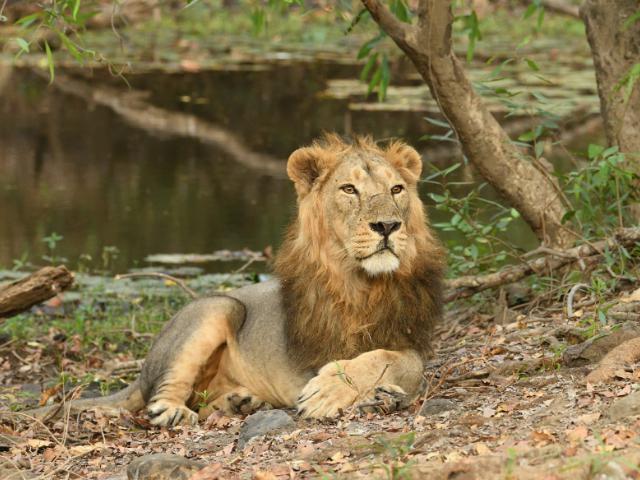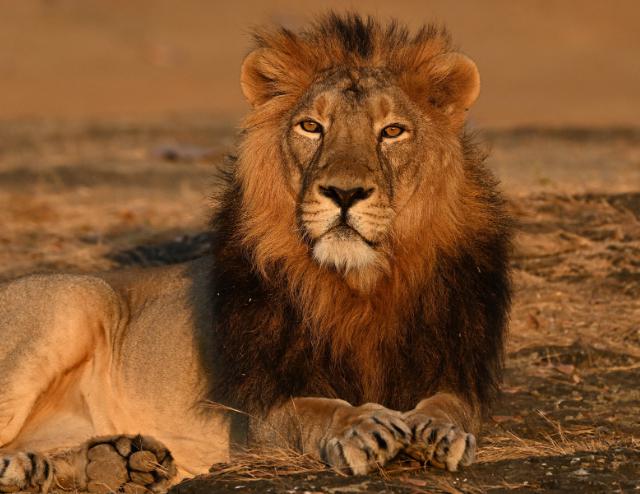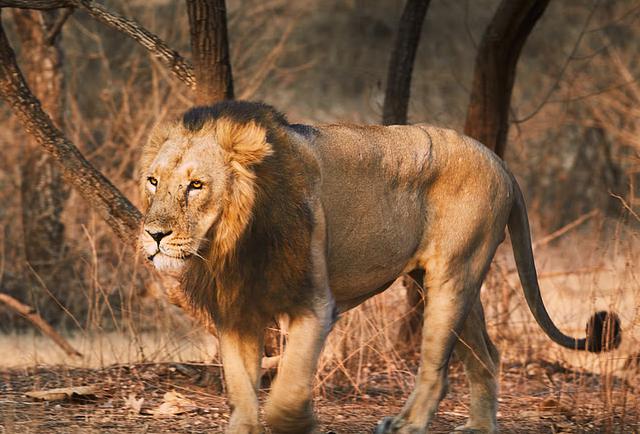Overly Enthusiastic Zeal of Gujarat
For the past quarter century ever since a search began for a second home to Gir lions, wildlife experts in India are flabbergasted the way lion conservation programmes are handled. It would be interesting to note observations made in a paper Asiatic Lion: Ecology, Economics and Politics of Conservation published in August 2019 in a journal “frontiers in Ecology and Evolution”. Written by noted wildlife scientist Yadvendradev V Jhala and six others, the paper talked about “overly enthusiastic zeal” of Gujarat and “socio-political deadlock”. It said: Establishing a second free-ranging lion population away from Gir should be the most important conservation priority for the species. Kuno is an ideal option in a state that has a proven track record for tiger conservation.” Substantial investments have already been made in Kuno which is ready to receive the founding stock of lions. It is unfortunate that due to overly enthusiastic zeal Interdisciplinary Research on Asiatic Lions of ownership and monopoly of the people of Gujarat, the Asiatic lions are caught in a socio-political deadlock that prevents this essential reintroduction program, despite a clear directive of the Supreme Court of India.
Also read: Lion Spillover From Gir National Park Gets Closer To Ahmedabad
Conservation of Asiatic lions is thus a conundrum with an admixture of contradictions and improvisations. Based on information accrued from our long-term research added to past knowledge, we demonstrate that conservation of a species so deeply engrained in human ethos and psyche not only requires appropriate scientific knowledge of its ecology but also a multidimensional understanding that encompasses history, culture, economics, and politics for its holistic management. We reiterate that only through the continued nurture of Asiatic lions and other wildlife would their nature be fully safeguarded in a country like India that teems with people and biodiversity. The study paper published in 2019 also said, “Despite the direction of the Supreme Court in 2013 and an action plan by the miniostry of environment ,forest and climate change (MOEFCC) in 2016 with a clear vision, the reintroduction program is facing a socio-political deadlock for the past 6 years.”
Family Member and Pride of Gujarat
The research paper was referring obviously referring to the tantrums of Gujarat over the issue of translocation of lion. The need for setting up a lion population outside Gujarat was recognized by the Wildlife Institute of India way back in 1993 as an “insurance” against threat of mass-casualty that may be caused by epidemics or natural calamities. Canine distemper outbreak had killed 1,000 African lions in Tanzania’s Serengeti National Park in the early 1990s. The 1993 meeting was followed by a search to the second home within the historic range of the Asiatic lion. Kuno-Palpur sanctuary in Madhya Pradesh which was later upgraded to a national park was identified to be the most suitable for reintroducing the species. After a massive exercise of relocation of 24 villages from Kuno and the confirmation of an adequate prey base, the Centre in 2004 wrote to Gujarat for releasing lions. This was followed by unfolding of prolonged drama lasting over a decade.
Also read: Cheetah Races For Kuno, Defeats Lion
Gujarat government stubbornly resisted the move to relocate a pride of the animal to Kuno, often on grounds completely unrelated to conservation. Nine years later in 2013, when all its arguments exhausted, it refused to part with the animals describing lion “as family members who cannot be parted with. The Supreme Court, in April 2013, set a six-month deadline for translocation and constituted an expert committee for the project. The apex court ruled, “The cardinal issue is not whether the Asiatic lion is a ‘family member’ or the pride of a state but the preservation of an endangered species for which we have to apply the species best interest standard.” It also said no to Cheetah project. Almost immediately, Gujarat filed a review petition, followed by a curative petition. Both there dismissed. Still refusing to part with a pair of “family members”, Gujarat insisted on completing over 30 studies before translocating lions. But after a petition filed by the National Tiger Conservation Authority (NTCA), the SC allowed the cheetah project as a pilot test.
Lions Only For Gujarat
The Project Lion in September 2020 was launched by Prime Minister Narendra Modi on August 15 By August 2021; Gujarat prepared a fresh 10-year roadmap with a budget of Rs 2,000 crore to populate Barda wildlife sanctuary and a few other areas, with no provision for shifting lions outside the state. This plan has been modified at WII into a 25-year roadmap to facilitate natural dispersal of lions and establish new lion populations within Gujarat. In a written reply to a question in the Lok Sabha on July 25 , 2022, the Union minister of state for MOEF Ashwini Kumar Choubey limited the scope of assessing the suitability of a new habitat for lions to potential sites in only in Gujarat. He said,” A committee was constituted by MOEF in a view to assess the suitability of habitat for lions in potential sites in Gujarat and make recommendations regarding facilitation of natural dispersal of lions and the modalities for establishment of lion population in newly identified sites in the state of Gujarat.”
Also read: Problem Of Plenty: Gir Lions Turn Scavengers As Deadly Virus Stares
Meanwhile, Cheetahs would be airlifted to India in airplanes when the fastest animal on land would make a long and arduous journey from Namibia and South Africa.The joke doing the rounds from the Union ministry of environment , forest and climate change to the state secretariat in Bhopal, the capital of MP where Cheetahs would be translocated is, “ lions are expected to reach MP by dispersing from Gujarat via Rajasthan in the next quarter century while the cheetah will reach by plane”. There is also an inherent story in the joke : the story of a 'government push' for Cheetah and 'bottlenecks for lion'. Movement of the government files in Delhi moved faster than Cheetah’s sprint. Carrying the documents, bureaucrats ran faster than the spotted cat to clear the project while the government files to translocate lion are still gathering the dust and the lion may never ever reach Kuno.
Images : Courtsey Gir National Park and Gujarat Tourism





Comments
Post a Comment